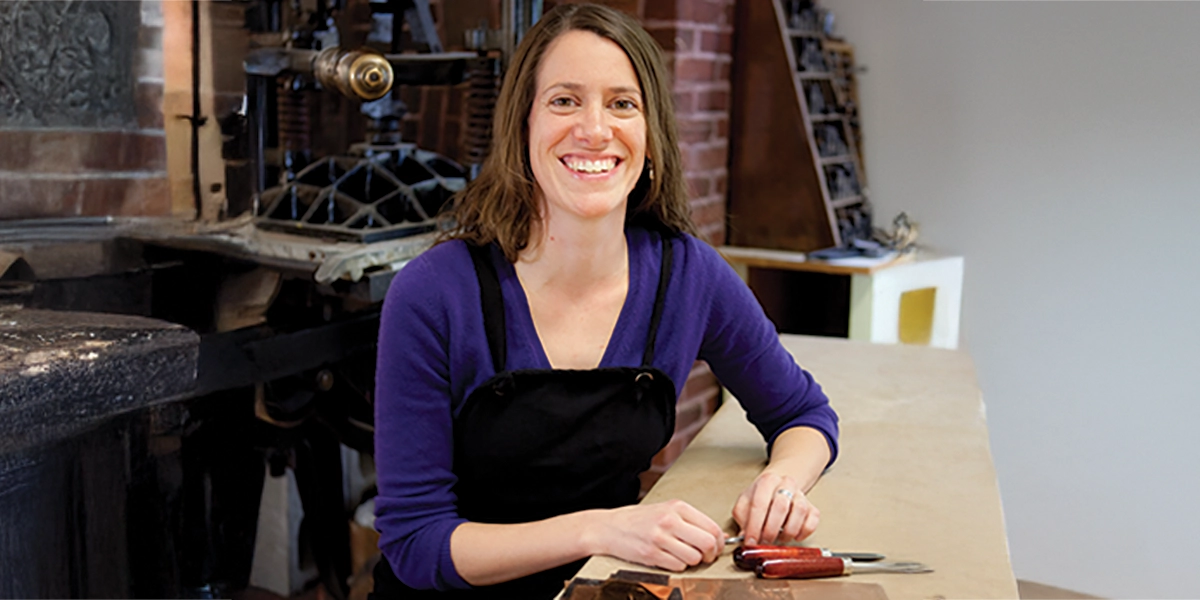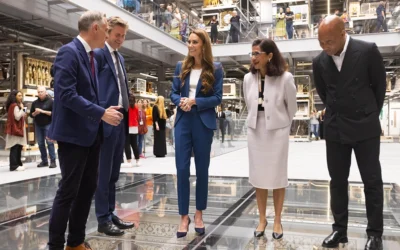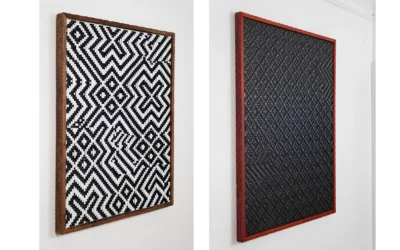Carrie Scanga Explores Personal Mythologies and Community Connections in Her Multidisciplinary Art

PHOTO: Carrie Scanga, renowned multidisciplinary artist, in her studio surrounded by vibrant creations that reflect her personal mythologies and community-centered themes.
Inspired By Nostalgia and Theory; Creating Mechanisms for Communion; Bridging Art and Academia
Carrie Scanga, a multidisciplinary artist, blends personal mythologies and community engagement in her diverse artworks, inspired by printmaking, ecology, and collaborative creation.
Carrie Scanga is a luminary in the world of contemporary art, seamlessly weaving together various mediums to create works that resonate with deep personal and universal themes. Her installations and works on paper reflect a profound engagement with personal mythologies, nostalgia, and complex theories drawn from ecology, architecture, and design. This multidisciplinary approach not only invites viewers into her introspective world but also encourages a collective experience that transcends individual narratives.
Educated at esteemed institutions such as Bryn Mawr College and the University of Washington, Scanga has developed a unique artistic voice that resonates across diverse platforms, from solo exhibitions in cosmopolitan centers like Berlin and Philadelphia to collaborative projects in community-driven spaces. Her artistic journey, enriched by numerous prestigious fellowships and residencies, has allowed her to explore and innovate, leading to creations that surprise and inspire both herself and her audience.
In her work, Carrie Scanga beautifully encapsulates the desire for connection and the creation of safe, inclusive environments. Her artistic practice is not just a solitary exploration but a communal experience, inviting participation and fostering a sense of belonging. This editorial introduction celebrates not only her artistic accomplishments but also her invaluable contributions as an educator at Bowdoin College, where she continues to inspire and nurture the next generation of artists. Her work is a testament to the transformative power of art and its ability to build bridges between personal and shared human experiences.
Carrie Scanga’s visionary art captures the essence of communal connection, transforming individual experiences into universally resonant installations and works.
How has your background in printmaking influenced your multidisciplinary approach to art, particularly in your installations and works on paper?
My background is in intaglio printing which consists of drawing invisible lines by touch and instinct. Each gesture disappears immediately; their residue is only revealed later when I roll the inked plate through the press, but by then it’s taken on a life of its own. The final print has the amazing ability to astonish me with a thicker, extruded-seeming, and embossed mirror image of my own drawn lines. When I work with other media, I seek out that same sense of astonishment you get when you cease to be the creator and join the audience for a creation that has become autonomous.
Your work often reflects on personal mythologies and nostalgias. Can you share how your personal experiences shape the themes in your art?
There is a persistent desire to use my work to create a sense of home and safety and belonging, for others but, perhaps selfishly, also for myself. Throughout my life, certain emotional and architectural structures have become associated with that feeling of belonging and with its absence. For instance, the vaulted ceilings of the church I attended as a child always reminded me of the hull of an old ship. I was reminded of them years later when I helped transform an old church into an arts space – another moment steeped in deep connection to those around me. When I look at my work, the curved lines of buildings and boats remind me to remember that feeling. I know my personal cosmology of symbols won’t stir everyone in that way, but I like to think there’s some people who get the similar feeling when they look at the work.
“I seek out that same sense of astonishment you get when you cease to be the creator and join the audience for a creation that has become autonomous.” – Carrie Scanga
What role do ecology, architecture, and design theories play in the conceptualization of your artwork?
My site-specific installation “Breathe: The Emergent Colony” was inspired by conversations with my ecologist and beekeeper sister. She taught me that “emergent systems” describe the moment when evolutionary traits gain momentum and take on lives of their own. “Breathe” consisted of a canopy of honeycomb-like structures created by folding and sewing together tracing paper into glowing yellow architecture that acted as a beacon for creative actions. It was installed several times over more than a decade, and each time, it was activated in a unique way. In this sense, it served as a tool designed to help build a colony rather than a static object.
That project was an important turning point in my work. I continue to think of my work as a series of mechanisms designed to be used by communities to connect, which means I often have a sensory or aesthetic plan that carefully considers color and scale as a way to move people through space. But what happens once they start moving unfolds intuitively and is always a surprise.
You’ve exhibited internationally and across the U.S. in places like Berlin, Kansas City, and Philadelphia. How have these diverse locations influenced your artistic perspective?
Exhibiting nationally and internationally is an exciting way to see how different communities engage with the work, but I always find myself fighting against the sense that I am some circus coming to town. This pushed me to think about how my work can come from a place of community even when I’m working in an unfamiliar space. This pushed the work to become more collaborative, larger in scale, and it became more and more important that the work moved viewers, not simply to consume but to act. A central question became: how can I create a contagious desire to join in, regardless of where I am?
As a recipient of numerous fellowships and residencies, how have these opportunities impacted the development of your practice?
I was extremely grateful to have the support of many institutions at a crucial point in my career. For several years, I was able to cobble together a precarious livelihood off of residencies and grants, something that I think is increasingly out of reach for artists as paid opportunities become increasingly competitive. That chapter was filled with a lot of sacrifice and my family lost sleep worrying about me at times. That combination of hardship and freedom were the perfect pretext for me to indulge in creating the work that soothed me the most, which helped me hone in on the deeply personal language that continues to define my work.
In addition to creating art, you also direct the Marvin Bileck Printmaking Project at Bowdoin College. How does your role as an educator inform your own creative work?
Admittedly, I first came to teaching in search of some stability, but what I’ve found at Bowdoin College has been so much more than that. The program was founded by Emily Gelivan, in honor of her husband, both of whom were passionate about bringing printmaking to life and using it to foster a sense of common good. I often admire her foresight in choosing Bowdoin for this program because there is such a unique sense of open-heartedness among the students. For me, it’s perfect because it fosters the sense of belonging I so often seek through my work, and offers endless opportunities for me to build in and support more mechanisms for connection.












